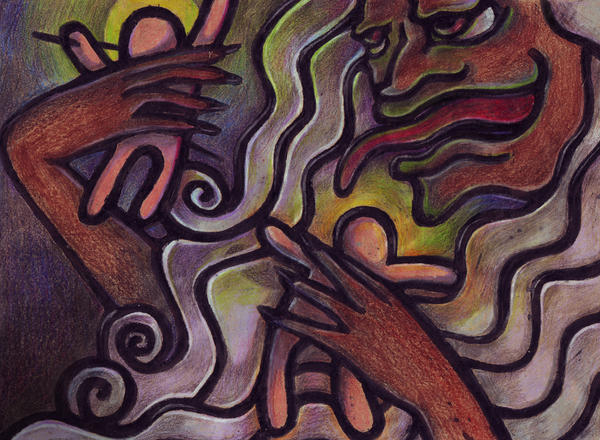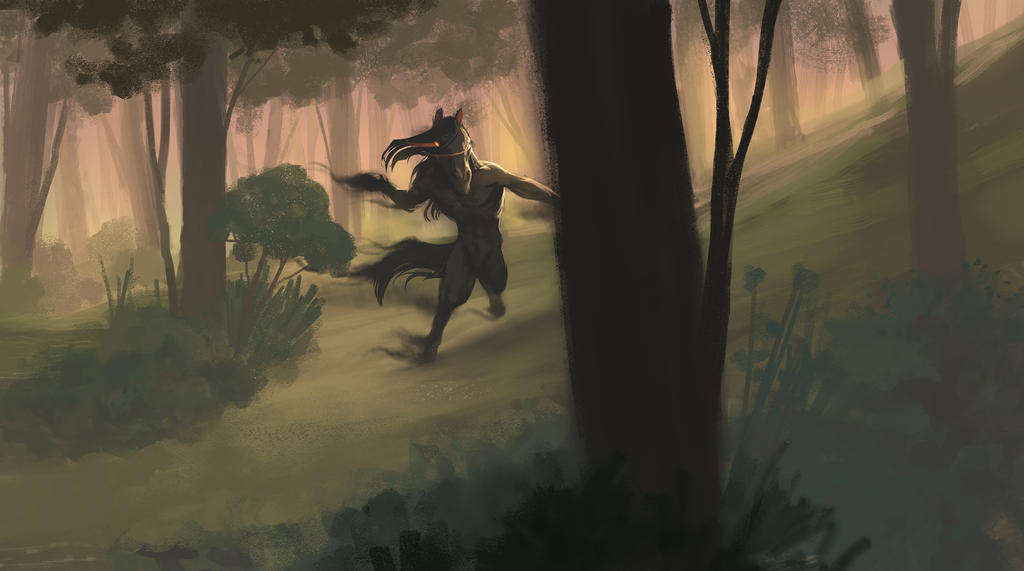Before the era of colonization came upon South East Asia, old customs and beliefs were the only thing that people could lean upon to explain their surroundings. Since science and “modern” thinking hadn’t come to our land yet, our ancestors tried to analyze various phenomena and incidents in their community with a mystical approach, where Engkanto were almost always involved. Medical and health conditions were no exception to this.
It was believed that maladies acted as a punishment from unseen entities which were accidentally offended by our ancestors. In other versions of explanation, sickness is synonymous to curse, and hexes were inflicted by malicious beings driven by jealousy, hatred and other darker shades of intentions. No matter what the reason and motives, the only answer that early Filipinos could devise are the doings of supernatural entities in which they have no power to control or understand.

Strange Giver of Skin Illnesses
Skin problems are commonly encountered all throughout the world regardless of any culture, gender and age. In a tropical area like the Philippines, besides the stray plants, insect bites and other allergens can trigger itchiness, swelling and rashes in the skin. Engkantos are also an alleged prime cause of skin diseases. According to Bicolano folklore, a half humanoid and half horse being called Onglo was a major nuisance to the people. This centaur like creature was known for its gruesome features (hairy body, putrid smell and long sharp nails) and highly avoided, for just a single touch could cause itching all over one’s body.
In Ilocano regions, an incurable skin disease is said to be acquired from a thicket dwelling Engkanto called Kaibaan (or Kibaan). These beings are quiet similar in physique with the Allan, for they have inverted feet, but they differ when it comes to dealing with people. Allan have a reputation as a man eating Engkanto, while Kibaan – regardless of it’s terrifying appearance – is more benevolent. It has tendencies to court and serenade beautiful women in a village. If the Kibaan is rejected by woman it pursues, it will blow a mysterious powder, said to caused skin diseases. The only way to cure this is through seeking the thicket where the Kibaan lives and asking for forgiveness.
Sons and Daughters of Engkanto
Engkanto come in various shapes and appearance. They can be of a hybrid form of human and animals. At times they can be grotesque but others claim that these beings are a sight to behold. Descriptions of white skinned beings with ethereal beauty are always associated with the sightings of an Engkanto. This could be the reason why folk people considered Albinos as a product of a forbidden affair of a mortal and an Engkanto. Albino individuals are colloquially called “Anak Araw” (Child of Sun) because of the extreme whiteness of their skin. Modern science later proved that Albinism is a congenital condition wherein an individual lacks melanin, which is responsible for skin color. However, in rural areas, the stigma remains towards Albino individuals due to their unnatural looks.
Deformities and Polymelia (a condition where an individual has more than the normal number of limbs or other structures of the body) that have been observed in infants were also associated to Engkantos or Malignos who fell in love with an unknowing woman. This love led to these entities impregnating their victim without any direct contact. There is a belief that these beings only need a piece of clothing from the mortal to conduct this act (often times the undergarments). It sounds quite similar to sympathetic magic used in witchcraft where a single item possessed by a certain individual acts as a link to the sorcerer or witch to cast spells or curses.
Another example of medical conditions suspected to come from an Engkanto is Marfan Syndrome, a genetic condition which causes an individual to look like a Kapre due to their resemblance of unusually long hands and limbs. The giant tree dweller was said to have the ability to possess the husband of a woman they fell in love with, then impregnate the woman – sharing their physical similarities to the still unborn child.

Curses, Madness and Incurable Diseases
Although Engkanto are considered to be an amoral creatures of nature, there capriciousness can be quiet lethal to a mere mortal. Tales of individuals being trapped forever in hallucination and delusion (symptoms of severe psychological problems such as schizophrenia and paranoia) after encountering playful, deceiving Engkanto are among the prevalent tales still heard today. The Tikbalang ,who are fond of tricking an unwary travellers by making them lose their own sense of direction, are one such being. Sometimes they even target young maidens that they will abduct and bring to their home to become their wife. There are even narrations that just a mere sighting of this creature can cause insanity out of intense fear and wonder, where the thin line between reality and fantasy overlap one another and overwhelms the mind.
Yet among the above medical conditions brought by Engkanto, the most infamous among the communities in the Philippines is probably the Sumpa/Kulam – or curses inflicted by dark arts practitioner known by many names such as Mangkukulam and Mambabarang. These two are often times depicted in many different ways: they can be both an old or young woman, withdrawn, living in seclusion – sometimes with their odd animal, counterpart companion, such as snakes and frogs. Mangkukulam can cause someone to acquire incurable diseases that even doctors can’t heal. The Mambabarang however are more on the extreme side, for they utilize gross insects to punish their victims and deteriorate their health.

The Remedy: Knowledge
As we develop and continue to explore the wonders of modern science, our minds discover more logical and sophisticated approaches towards the unknown. We can’t argue the fact that this gives us the key in understanding diseases which were previously thought to be brought on by supernatural forces.
Among the early Filipinos who became an adept in medicine is our very own national hero, Dr. Jose Rizal. It seems quite contradictory that a man like Dr. Rizal would have an interest in Kulam as a scholarly subject. Perhaps our national hero’s motive on writing a discourse about Pangkukulam was a desire to analyze and bring a rational light to the cause of the diseases that was tormenting his countrymen
The medical discourse entitled “La Curacion de los Hechizados” (Treatment to the Bewitched) was written by Rizal during his exile in Dapitan. It consists of information regarding the difference between a Mangkukulam and Mangagaway. Rizal even drew some images of Kulam victims in a ‘comic’ like fashion. Because Rizal is considered a man of science, he dismissed the herbolarios (healer) methods, like whipping their patients with the tail of the Pagi (Sting Ray) and incantations to expels the evil spirit that was cast by Mangkukulam to torment their victims.
Instead, Rizal approached Kulam as a case of psychological disturbances over a cause of magic and sorcery. He believed that the curse or illness brought by the Mangagaway and Mangkukulam were only ideas that were triggered in the mind of their victims. Thus it is more likely associated with the so called “power of the mind theory”, “mind over matter” or even the concept of hypnotism, which are being explored by many scientist as the study of the human mind continues to progress.
We are still in a quest to explain things that are left unsolved, but are now equipped with the right knowledge to guide us in uncovering the answers we seek in crucial areas of society like medicine and health. Not unlike Rizal, opening our thoughts to brand new ideas will aid us all with improving our way of thinking and our perspective towards our surroundings. However, in our rush towards the promise of a greater change, we should always remember to look back to where we began. This is an important part of retaining our cultural identity – no matter how crude or illogical those beliefs may seem.
Currently collecting books (fiction and non-fiction) involving Philippine mythology and folklore. His favorite lower mythological creature is the Bakunawa because he too is curious what the moon or sun taste like.


